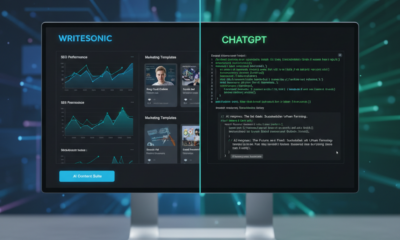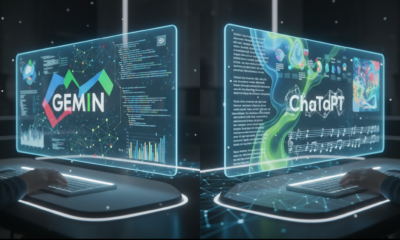

Open Ai
The Phase-Out of GPT Models: What Users Can Expect in 2025
OpenAI’s GPT Phase-Out Timeline in 2025: Dates, Models, and Immediate Effects
The phase-out of certain GPT models is reshaping how teams plan, budget, and deploy AI. GPT-4.5 (code-named “Orion”) debuted with significant hype in late February, only to see its API access scheduled to end on July 14. The model remains in ChatGPT’s research preview for subscribers, but developers using the API must transition. OpenAI has positioned GPT-4.1 as the default alternative, stating it offers comparable or better results on essential tasks with a lower cost profile. For developer platforms, GitHub Copilot is set to remove GPT-4.5 from its IDE/model pickers by early July, directing users to upgrade paths and validated replacements.
Why the sudden reversal on Orion? Despite stronger writing and persuasion compared with GPT-4o, Orion did not hit “frontier-level” marks across industry benchmarks. At the same time, the model’s operational costs are steep: $75 per million input tokens and $150 per million output tokens, making it one of the pricier options in the catalog. Consolidation also aligns with a broader product simplification plan: fewer model choices, more consistency, and a unified future that reduces the need to manually pick reasoning depth or modality.
Teams that rely on Orion’s specific behavior have a short window to test GPT-4.1 parity. A pragmatic path is to segment workloads—copywriting, summarization, code review—and run side-by-side evaluations for accuracy, latency, and cost-per-task. This is particularly relevant for content platforms and knowledge management teams that leaned on Orion’s persuasive tone generation. The same approach works for sales enablement tools where tone and personalization matter, allowing a tight measurement loop on win rates and response quality.
What users should do now
The most resilient organizations are already instituting “model mobility” as a core design principle. In practice, that means swapping default models via configuration, keeping prompt templates portable, and maintaining test harnesses so quality does not degrade during migrations. It also means engaging finance and security stakeholders now—not after a breaking change lands on a Friday.
- ✅ Map dependencies: identify endpoints, SDKs, and business flows calling GPT-4.5. 🔍
- ⚙️ Enable feature flags: toggle GPT-4.1 or other fallbacks without redeploying. 🔁
- 🧪 Set up A/B checks: compare output quality on real prompts before the cutover. 📊
- 💸 Track cost-per-task: monitor input/output token usage, not just list prices. 💡
- 📚 Educate stakeholders: share an a practical 2025 ChatGPT FAQ to align on expectations. 📣
Key changes at a glance
Below is a concise view of what shifts and where the pressure points land for product, engineering, and finance leaders.
| Item 📌 | Before (Orion) | After (Priority) | Impact 🎯 |
|---|---|---|---|
| Availability | GPT-4.5 API active | API ends by July 14; still in ChatGPT preview | Migration clock is ticking ⏳ |
| Primary Alternative | GPT-4.5 for persuasion | GPT-4.1 recommended | Re-evaluate tone and quality ✅ |
| Cost | $75/M input, $150/M output | Lower unit costs on 4.1 | Budget relief possible 💵 |
| Benchmarks | Not “frontier-level” on many | 4.1 comparable/better in essentials | Performance parity checks 🔬 |
| Developer Tools | Orion selectable in pickers | Removed from pickers by early July | Update CI/CD, docs, and SDKs 🛠️ |
For teams needing a compass during this transition, curated resources such as the open-source AI week roundup and community explainers like what “out of 18” means in current grading provide useful analogies for evaluation frameworks and scoring approaches.
Adapting early delivers compounding returns: stronger reliability during vendor shifts, lower switching costs, and fewer user-visible regressions when deadlines arrive.

Migration Without Drama: Moving From GPT-4.5 to GPT-4.1 and Other Options
A calm, staged migration converts a stressful deprecation into an opportunity to optimize. Organizations that decouple prompting logic from deployment targets and adopt capabilities-based routing can swap models with minimal disruption. The guiding principle is simple: treat the language model as a replaceable component while preserving product behaviors through validation and guardrails.
Consider a fictional SaaS, “HarborDesk,” which uses Orion for customer reply drafting and internal knowledge summarization. A sustainable path involves wrapping model calls in a service layer that exposes capabilities like “summarize,” “classify,” or “draft,” then mapping those to GPT-4.1 or other engines. Prompt templates become assets with version control; automated tests validate truthfulness, structure, and tone. For high-stakes messages, a human-in-the-loop workflow remains active until the team establishes new baselines.
A step-by-step playbook
- 🗺️ Inventory prompts and datasets: tag by task (summarize, code review, forecast) and sensitivity. 🧩
- 🧭 Define quality KPIs: accuracy, latency, token-burn, and user satisfaction scores. 🎯
- 🧰 Abstract the model: implement a “capabilities router” selecting GPT-4.1 or alternates. 🔄
- 🧪 Run shadow traffic: execute GPT-4.1 in parallel and compare outputs before switching. 🌗
- 📈 Iterate prompts: re-tune system instructions and temperature settings; log deltas. 🔧
- 🔐 Add safeguards: content filters and retrieval checks to minimize hallucinations. 🛡️
- 📣 Communicate change: share an updated ChatGPT AI FAQ with stakeholders. 📝
Cost and risk comparison
While Orion’s sticker price is high, total cost of ownership also reflects error rates, rework, and latency. If GPT-4.1 yields fewer retries on structured tasks, the effective cost per completed task can be materially lower even if raw token counts are similar.
| Option 🔄 | Unit Price | Quality on Essentials | Operational Risk ⚠️ | Notes 🧾 |
|---|---|---|---|---|
| GPT-4.5 (Orion) | $75/M input, $150/M output | Strong writing/persuasion | High (API sunset) | Preview remains in ChatGPT 🧪 |
| GPT-4.1 | Lower than 4.5 | Comparable/better in core tasks | Low | Primary migration target ✅ |
| o-series (reasoning) | Varies | Deeper logic on select tasks | Medium | Previews may change 🔍 |
| Third-party (e.g., Anthropic, Cohere) | Varies by vendor | Task-dependent | Medium | Evaluate via abstraction layer 🧱 |
HarborDesk’s pilot found GPT-4.1 reduced median latency by 12% and cut rework on invoice summaries by 18%. Downtime risk was mitigated with circuit breakers and automatic retries through a fallback pipeline. For legal review memos, outputs were constrained using retrieval augmented generation (RAG), ensuring citations point to source documents rather than invented facts.
Developers often ask whether to pause innovation until GPT-5 becomes widely available. The practical answer is no. Rightsize now, and design for agility later. Building portability—prompt registries, test suites, and router logic—turns future upgrades into switch flips rather than rewrites. For technical leads hungry for more context and community case studies, this developer collaboration initiatives roundup captures patterns worth emulating.
Handled deliberately, migration becomes a tailwind: a smoother experience for end users and a cleaner engineering surface for ongoing improvements.
From Orion to Unified Intelligence: What GPT-5 Changes for Users and Teams
OpenAI’s roadmap signals a re-architecture of the product experience. The company aims to replace the “model picker” with a unified system that chooses the best approach—quick answers or deep reasoning—without user micromanagement. GPT-4.5 is the last major model before full adoption of stepwise reasoning capabilities across the stack, a transition that aligns with integrating o-series strengths directly into GPT-5. OpenAI has also clarified market noise: GPT-6 will not ship this year, reducing speculation and helping teams plan around a more stable target.
The plan further suggests free, unlimited access to GPT-5 for ChatGPT users at a standard intelligence level, with Plus/Pro tiers unlocking higher reasoning performance. For enterprises, this has two consequences. First, self-serve users will be exposed to stronger defaults, raising expectations for speed and correctness. Second, product builders should anticipate fewer knobs on the UI surface—less friction, but less manual control. That puts the onus on prompt design, evaluation harnesses, and governance to ensure responsible, predictable outcomes at scale.
Feature shifts to expect
- 🧠 Deeper reasoning: stepwise logic and better decomposition of complex tasks. 🧩
- 🖼️ Expanded multimodality: text, images, voice, and likely video across a single interface. 🎙️
- 🔎 Built-in research: stronger retrieval and grounding to reduce hallucinations. 📚
- ⚡ Streamlined UX: fewer model choices; the system decides “how much thinking” to apply. 🧭
- 🏷️ Clear tiers: free standard level; paid tiers for elevated reasoning and throughput. 💼
Pre- vs. post-unification comparison
| Dimension 🧭 | Pre-Unification (GPT-4.x + o-series) | Unified Direction (GPT-5) | Outcome 🚀 |
|---|---|---|---|
| Model Selection | User picks model | System picks strategy | Less decision fatigue ✅ |
| Reasoning | Available in specific models | Integrated, on-demand | Consistent complexity handling 🧠 |
| Multimodal | Fragmented across endpoints | Converged interface | Fewer handoffs 🔄 |
| Access | Mixed tiers, confusing picker | Free standard; paid for depth | Predictable experience 💡 |
| Governance | App-level policy | Policy-aware orchestration | Safer defaults 🔐 |
For teams considering a wait-and-see posture, the smarter move is to make systems “GPT-5 ready” by decoupling logic and aligning measurement to outcomes. That includes forecasting budgets as usage rises when free access broadens adoption, and setting rate limits and auto-red teaming for sensitive domains. A short, accessible explainer like this a practical 2025 ChatGPT FAQ helps non-technical stakeholders grasp what will change at the experience layer.
Unification will favor products that prioritize clarity and reliability over knobs and toggles. The payoff is an AI that “just works,” assuming teams invest in the scaffolding that keeps it safe and measurable.

Competitive Signals: Google, Microsoft, Amazon Web Services, and the Wider AI Stack
The phase-out coincides with intensifying competition. Microsoft continues to embed GPT-series models into Microsoft 365 Copilot, with communications indicating GPT-5 will become the default in enterprise environments on a staged rollout. Google advances the Gemini family, tuned for multimodality and search-integrated experiences. Amazon Web Services leans on Bedrock’s neutrality, giving enterprises a menu of models—including Anthropic’s Claude and other options—behind consistent APIs. IBM Watson focuses on domain-specific workflows, compliance, and lifecycle tooling. Meta AI pushes open model ecosystems with Llama variants, while Cohere emphasizes enterprise-grade text and retrieval. Hugging Face remains the hub for evaluation, fine-tuning, and community distribution. Apple is threading on-device intelligence into user workflows where privacy and latency are paramount.
What does this mean for a company like “AeroBank,” a mid-market financial services provider? Vendor diversification matters. AeroBank runs customer chat with an OpenAI model but backs it with a fallback to Anthropic for reasoning-heavy adjudication workflows. Meanwhile, analytics flows rely on Gemini for document understanding and AWS Bedrock for vendor portability. The play is simple: spread risk, standardize on evaluation, and keep data governance centralized so changes in one vendor do not fragment policy enforcement.
Signals to watch
- 🏁 Default shifts: Microsoft Copilot’s model transitions indicate enterprise-readiness. 🧭
- 🔗 Bedrock catalogs: AWS adding/removing models shows where demand concentrates. 🧱
- 🔍 Gemini updates: Google’s retrieval and grounded answers will pressure accuracy baselines. 📚
- 🧩 Open ecosystems: Meta AI and Hugging Face tooling cut switching costs. 🔧
- 📜 Compliance tooling: IBM Watson and Cohere prioritize guardrails for regulated industries. 🛡️
Ecosystem comparison
| Vendor 🌐 | Strength | Risk/Tradeoff ⚖️ | Enterprise Signal 📈 |
|---|---|---|---|
| OpenAI | Unified UX; broad capability | Model sunsets require agility | Copilot defaults and roadmap clarity ✅ |
| Search-grounded multimodal | Product sprawl risk | Gemini maturing in Workspace 🔎 | |
| Microsoft | Ecosystem integration | Tenant governance complexity | Copilot telemetry and admin controls 🏢 |
| Amazon Web Services | Model choice via Bedrock | Feature parity varies by model | Enterprise IAM and cost controls 🔐 |
| Anthropic | Safety and reasoning | Throughput constraints | Banking and healthcare pilots 🏥 |
| Meta AI | Open models, fine-tuning | Ops burden on teams | Llama adoption on HF 📦 |
| Cohere | Enterprise NLP and RAG | Narrower modality scope | SLAs and privacy posture 📜 |
| Hugging Face | Tooling and community | DIY complexity | Evaluation and distillation kits 🧪 |
| Apple | On-device privacy, UX polish | Cloud-scale constraints | Edge inference accelerates 📱 |
Phase-outs are a forcing function. The winners treat platform competition as leverage: negotiate better pricing, demand stronger SLAs, and keep model swaps cheap through abstraction and tests. Looking ahead, expect tighter coupling between retrieval systems and model orchestration—less “pick a model,” more “pick the truth source” and let the system do the rest.
As this market hardens, evaluation, governance, and portability become the enterprise moat—not any single model choice.
Budgets, Benchmarks, and the Reality of Scale: Engineering for Reliability
Behind the marketing, engineering leaders see the operational math. Training modern frontier models can cost from the high hundreds of millions to well over a billion dollars, and that spend must be recouped in usage, partnerships, and ecosystem lock-in. Orion’s rapid API wind-down likely reflects the balance between capability and cost; when a successor like GPT-4.1 delivers similar outcomes at a lower run cost, consolidation is rational.
Enterprises should resist the urge to chase absolute benchmark wins. Field performance—time to first token, grounded citations, and cost-per-correct-answer—matters more than leaderboard deltas. For a firm like “Helios Capital,” trading alerts cannot tolerate a slow token stream even if aggregate accuracy ticks higher. In practice, teams set SLOs around latency percentiles and guard hallucination rates with grounded retrieval and content policies.
How to build a reliability stack
- 🧪 Evaluation harnesses: golden sets, adversarial prompts, and regression checks. 🧬
- 🔗 Retrieval grounding: authoritative sources, freshness windows, and citation enforcement. 📎
- 🛡️ Policy controls: red teaming, content filters, and audit logs tied to tickets. 🗂️
- ⚡ Performance SLOs: p95 latency, throughput backpressure, and partial response handling. ⏱️
- 🔄 Model mobility: routers, rate-limiters, and cost-aware fallbacks. 🔁
Risk and control matrix
| Risk ⚠️ | Symptom | Control 🛠️ | Owner 👥 |
|---|---|---|---|
| Hallucination | Fabricated claims | RAG + citation checks | Applied AI team ✅ |
| Latency spikes | p95 > SLO | Token streaming + backpressure | SRE/Platform 🧰 |
| Cost overrun | Budget alerts firing | Quota + unit economics dashboards | FinOps 💵 |
| Policy drift | Inconsistent guardrails | Central policy engine | Security/GRC 🔐 |
| Vendor lock-in | Blocked migrations | Abstraction + test portability | Architecture group 🧱 |
As GPT-5 approaches with integrated reasoning and broader modality coverage, expect higher expectations from non-technical stakeholders. Educate early—what “unified intelligence” means, how tiers map to outcomes, and where costs and risks concentrate. Short community explainers, like this open-source AI week roundup, help teams internalize practices for safe iteration at scale.
Reliability is not a single feature; it is the emergent property of evaluation discipline, guardrails, and model mobility.
What Users Can Expect Next: Product Experience, Governance, and Everyday Workflows
The near-term experience will feel simpler. Most users will not choose models; they will issue tasks and receive responses calibrated to the required depth. For knowledge workers, this means fewer steps and less jargon. For administrators, the dashboard shifts from “model versions” to “policy contexts,” where sensitive tasks can force stronger grounding or require human review. This is where enterprise AI moves from novelty to dependable utility.
Take “Northwind Manufacturing,” which runs internal quality reports, supplier negotiations, and safety training. With GPT-4.1 replacing Orion in the API and GPT-5 on the horizon, Northwind implements policy-aware orchestration. If a request touches intellectual property, the router enforces strict retrieval against an internal index and blocks external browsing. If the task is casual—drafting a team update—the system uses fast, cost-effective settings. As adoption grows, finance monitors cost-per-output artifacts rather than raw tokens, tying spend to business value.
Practical expectations for the next two quarters
- 🧭 Simpler defaults: fewer UI choices; the system routes to the right reasoning level. 🎚️
- 🛡️ Stronger guardrails: policy-aware flows, safer content, and better audit trails. 📜
- 🏗️ Composable workflows: retrieval, tools, and agents stitched invisibly under the hood. 🧵
- 📉 Lower unit costs: especially shifting from Orion to 4.1 for everyday tasks. 💳
- 📣 Clearer communications: a public stance that GPT-6 is not shipping this year. 📆
Workflow design patterns
| Pattern 🧩 | When to Use | Key Control 🔐 | Metric 📈 |
|---|---|---|---|
| Grounded Q&A | Policy or finance queries | Citation enforcement | Hallucination rate ✅ |
| Draft → Review → Ship | Customer communications | Human-in-the-loop | Approval time ⏱️ |
| Summarize → Verify | Research briefs | Source freshness | Fact-error rate 🔍 |
| Classify → Route | Ticket triage | Confidence thresholds | Misroute rate 📬 |
| Generate → Test | Code suggestions | Unit tests | Revert rate 🧪 |
As unified intelligence takes hold, expect a consumer-like smoothness with enterprise-grade controls under the surface. For more background and ongoing Q&A, community resources such as the a practical 2025 ChatGPT FAQ offer approachable explanations for cross-functional teams.
The work ahead is less about picking the flashiest model and more about operational excellence: evaluation, policy, and portability that stand up to constant change.
When will GPT-4.5 lose API access and what should teams do?
API access for GPT-4.5 winds down by mid-July. Teams should inventory prompts, enable capability routing to GPT-4.1, and run shadow traffic A/B tests to validate quality, latency, and cost-per-task before flipping defaults.
Is GPT-5 replacing the model picker in ChatGPT?
Yes. The roadmap indicates a unified system that selects reasoning depth automatically. Free users will access GPT-5 at a standard level, with Plus/Pro tiers unlocking higher reasoning capabilities.
How does this affect Microsoft 365 Copilot and other enterprise tools?
Microsoft is moving to GPT-5 as the default in a phased rollout. Expect smoother experiences and fewer user-visible model choices, with admins managing policy contexts and governance centrally.
What about competitors like Google or Anthropic?
Google’s Gemini emphasizes search-grounded multimodality; Anthropic focuses on safety and reasoning. AWS Bedrock offers model choice under one roof. Diversify vendors, standardize evaluation, and keep your system portable.
Where can stakeholders learn more and keep aligned?
Share concise explainers such as community roundups and FAQs, including open-source collaboration highlights and 2025 ChatGPT FAQs, to demystify changes and set expectations across teams.
Max doesn’t just talk AI—he builds with it every day. His writing is calm, structured, and deeply strategic, focusing on how LLMs like GPT-5 are transforming product workflows, decision-making, and the future of work.

-

 Open Ai2 months ago
Open Ai2 months agoUnlocking the Power of ChatGPT Plugins: Enhance Your Experience in 2025
-

 Open Ai2 months ago
Open Ai2 months agoComparing OpenAI’s ChatGPT, Anthropic’s Claude, and Google’s Bard: Which Generative AI Tool Will Reign Supreme in 2025?
-

 Open Ai2 months ago
Open Ai2 months agoMastering GPT Fine-Tuning: A Guide to Effectively Customizing Your Models in 2025
-

 Ai models2 months ago
Ai models2 months agoGPT-4 Models: How Artificial Intelligence is Transforming 2025
-

 Open Ai2 months ago
Open Ai2 months agoChatGPT Pricing in 2025: Everything You Need to Know About Rates and Subscriptions
-

 Ai models2 months ago
Ai models2 months agoThe Ultimate Unfiltered AI Chatbot: Unveiling the Essential Tool of 2025





































